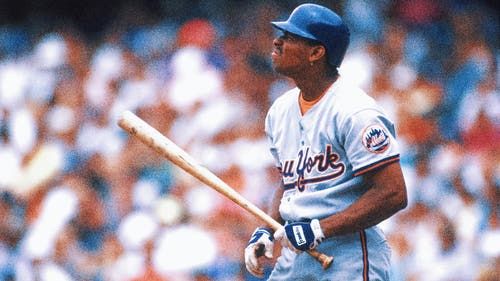
Negro Leagues Museum picks Kendrick as president
The former marketing director of the landmark Negro Leagues Baseball Museum received a standing ovation from a crowd that included former Negro League and major league players when he was introduced Thursday as the new president of the now-struggling institution.
''I don't want the clapping to stop when I ask you to write that check,'' said Bob Kendrick whose new roll will include putting the institution on firmer financial footing.
Kendrick traveled extensively with Buck O'Neil, the late and beloved ambassador of Negro Leagues baseball. Many had thought Kendrick was going to get the president's job two years ago, but the museum's board chose Greg Baker for the post.
Baker resigned last fall after a decision to back away from the museum's strong connection to O'Neil splintered many of its most loyal supporters. The recession further dampened donations and revenue.
Kendrick, who left the museum about a year ago and is returning after a national search, acknowledged later that ''things didn't work out the first time.'' But he said being around O'Neil when he fell one vote shy of induction into the Baseball Hall of Fame gave him insight into how to deal with disappointment.
O'Neil, a two-time Negro Leagues batting champion and longtime manager of the Kansas City Monarchs, died in 2006 at 94. Extraordinarily charismatic, he crisscrossed the country the last 15 years of his eventful life, spinning entertaining tales of long gone black stars while making friends and raising money for the museum.
''You wonder sometimes if you are put in a situation and a place for reasons that you don't really understand at that particular time as it was with Buck,'' Kendrick said. ''I learned a lot from that particular moment in time, which helped better prepare me for my own disappointment when I didn't get this job.''
Kendrick earlier told a cheering crowd he's happy to ''be back home'' and said his passions lie with ''the house that Buck built.'' He acknowledged later that people see him as an extension of O'Neil.
''I had the great fortune of being able to travel all over the country with him,'' Kendrick said. ''And as a result we struck up a wonderful relationship that moved well beyond being colleagues to being dear friends. And so I think people certainly appreciated that relationship and right or wrong there was obviously a connection and perhaps my not being here created a void relative to that connection to Buck and the museum itself. Hopefully people will now reconnect.''
The museum is the only one in the country dedicated exclusively to the Negro Leagues' contribution to baseball and American culture. Crammed with photographs, artifacts, memorabilia and interactive exhibits, it tells the story from the late 1800s until the late 1950s after the major leagues became fully integrated. Just down the street is the old YMCA building where Rube Foster formed the Negro Leagues in 1920.
''It is such a great place,'' said museum board member Michael B. Kanaley. ''People are excited to see it succeed. This is another step in the right direction.''
Jesse Rogers, who once played for the Negro Leagues' Kansas City Monarchs, was overjoyed too.
''It's the best thing that could ever happen to the museum,'' Rogers said. ''It will be getting better now. Now that Bob is back here it will build back up. It's a great day.''
Another Negro Leaguer, Ulysses Holliman, who played with the Birmingham Black Barons, said he would have voted for Kendrick the first time. With him back he was hoping people would ''come back and enjoy the museum.''










